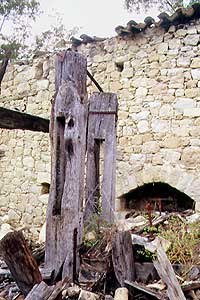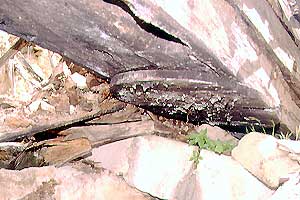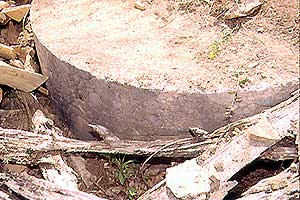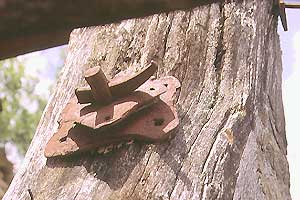Path: Introduction -
Visit the mills; catalogue - Erdao

Mills in Alto Aragón — molino aceitero
Erdao

Erdao is quite a remote spot but a visit to this
site combined with the mill of Centenera and the
castillo of Fantova will make for a rewarding day.
Leave Graus in northern direction towards Campo and Castejón de Sos. Turn right for La Puebla de Fantova. Once there do not enter the village, but continue straight-on towards Centenera. In the last bend before this mill turn right into the gravel and mud road. You'll drive through vineyards, then vegetable gardens and eventually will need to cross the Barranco de la Ribera. Don't worry, it's easy —at least when the weather is dry. You'll now follow the rivulet and slowly gain height until you'll reach kind of a plateau (1). Straight-on for Bafaluy, but we need the branch to the left. You'll soon find an old pila (2). Drop the car.
Leave Graus in northern direction towards Campo and Castejón de Sos. Turn right for La Puebla de Fantova. Once there do not enter the village, but continue straight-on towards Centenera. In the last bend before this mill turn right into the gravel and mud road. You'll drive through vineyards, then vegetable gardens and eventually will need to cross the Barranco de la Ribera. Don't worry, it's easy —at least when the weather is dry. You'll now follow the rivulet and slowly gain height until you'll reach kind of a plateau (1). Straight-on for Bafaluy, but we need the branch to the left. You'll soon find an old pila (2). Drop the car.
Pictures: 24.V.2007












